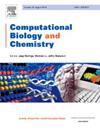通过机器学习识别 GspE 的递归动态抑制剂。
IF 2.6
4区 生物学
Q2 BIOLOGY
引用次数: 0
摘要
人们越来越认识到,II 型分泌系统是许多致病细菌(包括木糖酸 Achromobacter xylosoxidans)毒力的关键驱动因素。ATP 酶 GspE 是 T2SS 的动力源。它通过与 ATP 结合并水解 ATP,为整个分泌过程提供动力。因此,针对它的攻击被认为会对整个 T2SS 的正常运作产生深远影响。木糖酵母菌是一种革兰氏阴性菌,对免疫力低下的人群造成的危害日益严重。它主要导致囊性纤维化患者的许多机会性感染。由于其固有的和后天获得的抗药性机制,它的治疗具有挑战性。在本研究中,我们进行了广泛的机器学习计算调查。利用机器学习随机森林算法,对 8722 种已报告 IC50 值的抗菌化合物的非冗余数据集进行了筛选。然后进一步对活性化合物进行分子对接。为了揭示动力学并更好地了解复合物的稳定性,对顶级复合物进行了 MD 模拟,然后进行了各种模拟后分析,包括轨迹分析、原子接触、SASA、氢键、RDF、结合自由能计算、PCA 和 AFD 分析。研究结果表明,Asinex-BAS00263070-28551 是最佳抑制剂,因为它通过与 Walker A 动机进行关键的氢键相互作用,激发了目标的递归动力学,这表明它可以作为抗 GspE 的候选药物。要验证这些药物的治疗效果,还需要进一步的体内和体外实验验证。本文章由计算机程序翻译,如有差异,请以英文原文为准。
Recursive dynamics of GspE through machine learning enabled identification of inhibitors
Type II secretion System has been increasingly recognized as a key driver of virulence in many pathogenic bacteria including Achromobacter xylosoxidans. ATPase GspE is the powerhouse of the T2SS. It powers the entire secretion process by binding with ATP and hydrolyzing it. Therefore, targeting it was thought to have a profound effect on the normal functioning of the whole T2SS. A. xylosoxidans is a Gram-negative bacterium that poses a rising concern to immunocompromised people. It is responsible for many opportunistic infections mostly in people with cystic fibrosis. Due to its intrinsic and acquired resistance mechanisms, it is challenging to treat. In this current study, an extensive machine learning-enabled computational investigation was carried out. Drug libraries were screened using machine learning random forest algorithm trained on non-redundant dataset of 8722 antibacterial compounds with reported IC50 values. Active compounds were then further subjected to molecular docking. To unravel the dynamics and better understand the stability of complexes, the top complexes were subjected to MD Simulations followed by various post-simulation analyses including Trajectory analysis, Atom Contacts, SASA, Hydrogen Bond, RDF, binding free energy calculations, PCA, and AFD analysis. Findings from the study unanimously unveiled Asinex-BAS00263070–28551 as the best inhibitor as it instigated the recursive dynamics of the target by making key hydrogen bond interactions with Walker A motif, suggesting it could serve as the promising drug candidate against GspE. Further experimental in-vivo and in-vitro validation is still required to authenticate the therapeutic effects of these drugs.
求助全文
通过发布文献求助,成功后即可免费获取论文全文。
去求助
来源期刊

Computational Biology and Chemistry
生物-计算机:跨学科应用
CiteScore
6.10
自引率
3.20%
发文量
142
审稿时长
24 days
期刊介绍:
Computational Biology and Chemistry publishes original research papers and review articles in all areas of computational life sciences. High quality research contributions with a major computational component in the areas of nucleic acid and protein sequence research, molecular evolution, molecular genetics (functional genomics and proteomics), theory and practice of either biology-specific or chemical-biology-specific modeling, and structural biology of nucleic acids and proteins are particularly welcome. Exceptionally high quality research work in bioinformatics, systems biology, ecology, computational pharmacology, metabolism, biomedical engineering, epidemiology, and statistical genetics will also be considered.
Given their inherent uncertainty, protein modeling and molecular docking studies should be thoroughly validated. In the absence of experimental results for validation, the use of molecular dynamics simulations along with detailed free energy calculations, for example, should be used as complementary techniques to support the major conclusions. Submissions of premature modeling exercises without additional biological insights will not be considered.
Review articles will generally be commissioned by the editors and should not be submitted to the journal without explicit invitation. However prospective authors are welcome to send a brief (one to three pages) synopsis, which will be evaluated by the editors.
 求助内容:
求助内容: 应助结果提醒方式:
应助结果提醒方式:


